- Administrator
- Albums and Singles
 Papir's fourth album shows off the trio's dynamism and subtlety across a broad range of emotional and technically impressive instrumental passages, recalling influences as diverse and possibly accidental as Durutti Column and Hawkwind.
Papir's fourth album shows off the trio's dynamism and subtlety across a broad range of emotional and technically impressive instrumental passages, recalling influences as diverse and possibly accidental as Durutti Column and Hawkwind.
I have slowly developed considerable liking for this four song release. Not that there isn’t plenty of immediate pleasure in listening to IIII but some aspects of these lengthy instrumental pieces are revealed more gradually. The drumming, for example, takes the lead at times, even seeming to hold the melody on "IIII". While IIII is a proper album, in that it is a very coherent and connected composition, it does not have a recurrent theme, although the start of "II" and the whole of "IIII" share a mood of cool reflection after some frenetic interplay between instruments.
Papir has one foot in post-rock and another in an earlier, more muscular or fleshed-out progressive music with echoes of riff-driven psychedelia and surf-guitar. These influences do not tip over into mere pastiche and are kept very subservient to the trio’s own dynamic and semi-improvisational style. Thankfully, even on the extended passages, that style doesn’t really develop into an awkward situation where just the musicians are having all the fun.
Depending on my mood I either start the album with the brisk Tortoise-esque "I" or with the shortest piece, "IIII," which almost resembles a post-rock take on Peter Green’s "Albatross." This is only an option with the CD version as "IIII" is left off the vinyl due to lack of space.
Papir use lashings of twang and wah wah, achieve plenty of tweaks in tone and tension, and effectively use changes in pace and volume to add freshness and variety. My favorite of these changes is during "III," around 11 minutes in, where they drop into a complete silence then add a quiet guitar figure in a slower pace for a while. The effect is rather like the protagonist in a Murakami novel jumping a wall into a peaceful alley and sitting; an escape into another world away from the crowded city and his pressing concerns. Papir also execute a good hypnotic trick: making me listen so intently to the nuances and repetition in their music that I miss the exact point when—to put it in visual terms—the vase becomes two people kissing. This is an immersing release from a young Scandinavian trio.
Read More
- Administrator
- Albums and Singles
 “The idea for The Death Of Rave was conceived in early 2006 after a visit to the Berghain Club in Berlin. At the time Berghain was about to explode on the international club scene as a temple. The feeling was in the air that something special was happening. I went and saw a pale shadow of the past. Grim and boring beats, endlessly pounding to an audience who felt they were part of an experience but who lacked cohesion and energy. For me personally something had died. Be it a spirit, be it an ideal, be it an adventure in sound. Rave and techno felt dead to me.
“The idea for The Death Of Rave was conceived in early 2006 after a visit to the Berghain Club in Berlin. At the time Berghain was about to explode on the international club scene as a temple. The feeling was in the air that something special was happening. I went and saw a pale shadow of the past. Grim and boring beats, endlessly pounding to an audience who felt they were part of an experience but who lacked cohesion and energy. For me personally something had died. Be it a spirit, be it an ideal, be it an adventure in sound. Rave and techno felt dead to me.
The original The Death Of Rave project was vast, over two-hundred flashbacks, using all of the dance floor hits from the time and stripping theme of energy and spirit, turning them into shadows and ghosts. The material pre-dates the recent obsession younger musicians have for re-creating remembered rave textures and memories. This was not nostalgia, It was an inverted paean to a time when the music was about bringing people together for a shared experience. A time when only the music, advancement of sound and getting on one mattered.
Of course The Death Of Rave was vast, too vast to digest. It was available for free download for a number of years via the V/Vm Test label. In the end The Death Of Rave died itself when the V/Vm Test website was deleted in full in 2008. In the intervening years I have at various times re-visited the work. And so eight tracks were lifted from the project and have now been remastered by Matt Colton as a "document from a dead past." A monument to a lost work, an idea finally set in stone via a physical format. Proof of its existence.
Ivan Seal himself a veteran of the original "rave times" provides the glorious cover artwork in keeping with all History Favours The Winners" releases. The track-listing is in reference to the strongest rave-memories I have from those nights. The people, the DJ’s, the cars, the violence and the long lost clubs. Flashbacks only, now consigned to my own dusty experiences.
"'They danced like they never had before. They danced in the darkest hour before daybreak.’ It’s dead now, over. Long may it live...”
More information can be found here.
Read More
- Administrator
- Albums and Singles
 The story went like this…….
The story went like this…….
"There are 10 people who run the World. They are exclusively male, and presidents, magnates, and high priests all do their bidding. The 10 live in villas in the remotest part of the Himalayas—a place that absolutely NO-ONE would ever stumble upon. Although the 10 live in such close proximity to each other, they choose to have meetings in the back room of a small office in London. That's where the decisions are made. That's where the wars begin, that's where the dice are tossed across the table to establish who wins, who loses, who lives, who dies."
The classic conspiracy theory to end them all and I listened, open-mouthed, hair falling into my eyes . It was maybe 1976 when I heard this first.
You are right to snigger at my naivety. I listened and twisted this story around inside my head, and it did indeed seem completely unbelievable.
Now of course it's 2014, and I'm older and wiser and I have to laugh at myself too. Now I know wasn't a theory. Now I know it's true. EK
Uploaded here is merely a trailer for Volume 1, due out as a glorious slab of vinyl from the Rustblade label on 27 June 2014.
Read More
- Administrator
- Albums and Singles
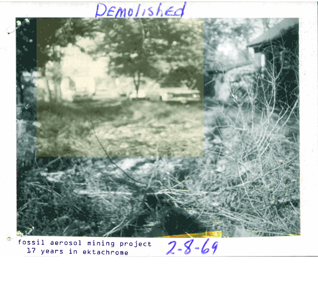 Extremely enigmatic and sporadically active over the past 30 years, Fossil Aerosol Mining Project maintains their secrecy on this new album of decaying material and found recordings. Heavily based on the use of ancient magnetic tape and careful mixing and processing, the result is a strange, sometimes dark but always captivating bit of audio art that emphasizes mystery above all else.
Extremely enigmatic and sporadically active over the past 30 years, Fossil Aerosol Mining Project maintains their secrecy on this new album of decaying material and found recordings. Heavily based on the use of ancient magnetic tape and careful mixing and processing, the result is a strange, sometimes dark but always captivating bit of audio art that emphasizes mystery above all else.
Songs such as "From the Lowlands" most clearly demonstrate this penchant for employing fragmenting, decaying sounds.Backwards tapes and what sounds like moody ambient electronics make up the bulk of the piece, with delays and pitch bending emphasizing this decaying feeling."Lowlands Hybrid" has the same feel to it, but more stripped down to a spacious ambient drone.
Field recordings act as a major element in a few of these pieces, but mostly as an instrument rather than the sole focus."Transparency of Limestone" sounds like a walk through nature, with chirpy birds and buzzing insect recordings receiving just the right amount of processing to make them unique.The familiar sounds are soon deconstructed into an expanse of crunchy textural noises and electronic space.The lengthy "Ice Falls/Taking on Water" uses some natural sounds with a synth like expanse, to put it somewhere between field recordings and conventional music.The ambiguity is only enhanced with the clanking machinery that ends up acting as a rhythmic counterpoint.
"Systems Clock" also demonstrates a little bit of a rhythm, interspersed with what sounds like vinyl record surface noise and recordings of idling engines.Extremely unconventional, but these found sounds are shaped expertly by these mysterious composers into something memorable.Bits of dialog and what sounds like radio communications on "Backbone 1982" give it a different, more dissonant feel overall.Dense, heavy passages of what sounds like a mass of electronics lead it towards a darker, more oppressive sound compared to the remainder of the record.
The found recordings and rotting tapes that make up the core of 17 Years in Ektachrome make for a mysterious, sometimes disorienting recording that leaves just enough that can be recognized audible, while building up a world of ambiguity all around.Coupled with the enigmatic nature of the project, the result is a fascinating record that features layers of mystery that are not easily unraveled.
samples:
 
Read More
- Administrator
- Albums and Singles
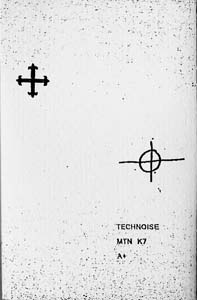 One of the most recent examples of an established noise artist "selling out" (and I mean that sarcastically) and making actual music was a surprising one. Avellan Cross' Elden M is best known for his work as the enigmatic Allegory Chapel Ltd., but has been dipping his toe into the new lo-fi EBM scene. The thing is, he brings enough of his dissonant past with him to make an album that really cannot be easily labeled, but covers enough of both industrial and noise to make it a strong entry in both genres.
One of the most recent examples of an established noise artist "selling out" (and I mean that sarcastically) and making actual music was a surprising one. Avellan Cross' Elden M is best known for his work as the enigmatic Allegory Chapel Ltd., but has been dipping his toe into the new lo-fi EBM scene. The thing is, he brings enough of his dissonant past with him to make an album that really cannot be easily labeled, but covers enough of both industrial and noise to make it a strong entry in both genres.
Opening song "MTN" is the biggest throwback to ACL's work on here.Made up of deep synth pulses and bass drum programming, it is sequenced so densely and delayed so much that the result has little tangible rhythm or melody to be grasped upon."Actual Reality" is also pretty dissonant, albeit not quite as significantly in comparison.More overt synth arpeggios clash with erratic drum machines, with Elden’s voice whispered and echoed heavily.The sounds used throughout might be a bit more traditional, but the structuring is anything but.
ACL's harsher noise tendencies also flare up on "Strawberry-Blonde GF" in the form of shifting waves of synth noise underscoring a spiky, echoing drum machine backing.Melodic synth passages lurk below these more dissonant moments, and in the absence of vocals, pornographic dialog samples are used instead.While that might sound cliché, it also makes for a fitting tribute to the early artists in the genres Avellan Cross is paying tribute to.
"Luminol" is more indebted to Detroit electro than any of the splinter genres of industrial, on the other hand.Straightforward synth patterns and 4/4 drum programming give it that proto-techno vibe, and the lo-fi vocal production and synth string pads give it a deliciously vintage sound."A+ Energie" works in similar ways, dropping the vocals in favor of dialog samples and emphasizing a sharp, snappy drum program to excellent effect.
Avellan Cross is influenced by the 1980s industrial scene, but it is only on the live "Man on Fire" where the most specific one shines through.Over a din of monotone kick drums and apocalyptic hand claps, his vocals dip into Alan Vega's pseudo-Elvis croon, complete with the vocal tics and outbursts that appeared on so many Suicide songs.It does not at all come across as a rip-off, but instead a fitting tribute to a band who influence is still felt to this day.
Bits and pieces of Technoise might clearly be traced to genres and artists past, but the way Elden M. pieces them together is what makes this release stand out.The unconventional composition combined with the raw production makes it clear that this project is not going for any sort of crossover success, and nor should it.It is a dirty, ugly, and noisy bit of electro, and that is exactly what I loved about it.
samples:
 
Read More
- Administrator
- Albums and Singles

A year on from their Public Information debut, Chicago duo Jeremy Lemos and Brian Case return to the fold with five new pieces of exquisitely produced wave-funk-techno-noise-electronics.
It takes great skill to pull off a three-minute electronic drone-grumble to kickstart your new record. Lemos and Case have it in droves. The tension is jet-black, loaded with friction. Modular energy pulses in and out, in and out. Then suddenly Case takes to the microphone, snarls and spits “Hey Bullfighter, read about you in a book...”
I W I finds Acteurs in a more assured, confident, angry mood than their debut. The signifiers are there – claustrophobic Ike Yard glare, Factory Floor throb, Diagonal abstractions – but we now have a bold swagger, stomping triumphantly into frightening new space. The crushing late-song collapse of "Honey Bear" is a breathtaking wall of clatter and noise that Tim Hecker would blush at. The loopy saw-tooth menace of "River Card" is as strange as anything they've done and the pummeling title track could easily shatter those murky dancefloors of strip-lit basements where people from the future dance in amongst the normals; machine drums puncturing the smoke, ear damaging feedback rattles the walls, torn Moog shapes cutting chatter to zero...end of night.
Out June 2nd. More information is available here.
Read More
- Administrator
- Albums and Singles

Editions Mego is proud to present the first recordings by Edvard Graham Lewis released this century. Having made his name in legendary punk/experimental outfits Wire, Dome and He Said, Lewis has developed an exceptional voice with ceaseless exploration of a wide variety of musical forms.
All Over is a song-based album that resides amongst the cracks between narrative and song, sound and music. Cloaked in an atmosphere of beauty and paranoia, All Over conjures the spirit of Wire's experimental pop trajectory whilst simultaneously exploring a multitude of sonic possibilities. Gritty mechanical operations support Lewis' wry human observations in a uniquely disturbing melange of punk, industrial, techno and pop. A dream logic plays throughout All Over courtesy of Lewis' odd lyrical content being set with all manner of disorientating sound and rhythm.

All Under, the companion release to All Over compiles soundtracks to films, installations and a self-penned short story. This is familiar terrain for Lewis who, along with Bruce Gilbert, produced the early interactive audio-visual installation 'MZUI' at London’s Waterloo Gallery in 1981.
Since this period, Lewis as been involved in countless soundtracks to all manner of cultural artefacts. The haunting score to Gunilla Leander's 2003 short film "All Under" was improvised in real-time with a sampler and FX processing and recorded onto mini disc. The results are a viscous ambience of swirls, feedback and distortion. This material was then adapted for an immersive 3 screen installation of the same visual material which features combinations of 6 nude bodies (4 men, 2 women) fighting and wrestling, filmed underwater. The soundtrack here crawls further in the depths as electronic phrases swim amongst a foreboding ambience. Both of these works encapsulate the same disembodied effect of the visual material as hovering, uncanny sound worlds seep into the listeners subconscious.
"The Eel Wheeled" features Lewis' reading one of his own bizarre stories underscored with a suitably disorientating soundtrack sourced from sound effects of the Prime Sounds SFX Library. This version was re-mixed by Thomas Öberg (member of Bob Hund and 27#11).
"No Show Godot" concludes the set. A soundtrack to a "sky movie" (road movies be warned) completed in 2013. Coming out of the initial sub-aquatic environments of the opening works, "No Show Godot" takes us on a spiralling high before folding into a gritty godly industrial mantra which comes along as a perfect means of tying up these two concurrent releases as a symmetrical whole.
Both albums will be out June 16th. More information can be found here.
Read More
- Administrator
- Albums and Singles
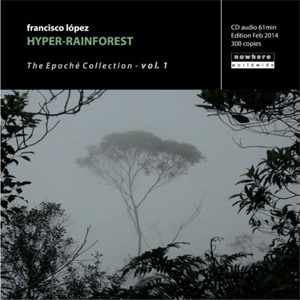 These first two installments of the Epoché Collection are a notable departure from the prolific Francisco López’s usual work, being that they are entirely untreated field recordings. Recording natural spaces is of course nothing new to him, as that has been an element of many of his compositions over the years. Even though he was essentially only a facilitator on these works; acting only on the selection of recordings and editing, the result still clearly shows his mark.
These first two installments of the Epoché Collection are a notable departure from the prolific Francisco López’s usual work, being that they are entirely untreated field recordings. Recording natural spaces is of course nothing new to him, as that has been an element of many of his compositions over the years. Even though he was essentially only a facilitator on these works; acting only on the selection of recordings and editing, the result still clearly shows his mark.
Both of these two self-released limited discs are based on recordings taken from various rain forests, but the overall sound and character of the two are quite different.Hyper-Rainforest is the more varied of the pair, constituting rainforest recordings over a 20-year period and across five continents, and was originally part of a massive sound installation.
Untreated field recordings, at worst, fall into the trap of being too sparse or simplistic, and are best relegated to the dollar store "relaxing sounds" bin.López, however, records them at their best.Hyper-Rainforest is anything but placid, capturing swarms of insects, frogs, and bird songs amidst roaring water and pouring rain.Recorded at a relatively loud level, the sounds of a waterfall or a rainstorm are as effectively harsh as the work of nearly any noise artist out there.
As loud as passages might be, however, they never overshadow the more delicate moments of these recordings.Subtle insect chirps and bird songs are allowed to be heard in the quieter segments, but the overall dynamics are constantly shifting.That is a huge asset of this recording:it never seems to stop or settle.Jumping from jungle to jungle via sharp, sometimes abrupt edits, it is the antithesis of mundane new age type nature recordings.
samples:
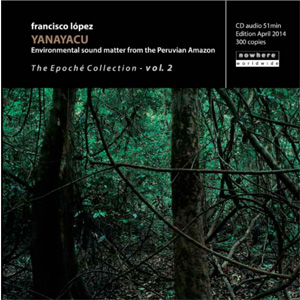 Rather than the expansive single piece on Hyper-Rainforest, Yanayacu is split into smaller, thematically defined segments.Consisting of recordings exclusively from the Peruvian Amazon, the more specific focus results in a recording that does not have the same rapid flow, but still avoids the negative clichés of field recordings.Instead of quick, shifting moments, these are more open and expansive pieces that are allowed to settle in and work on a more microscopic scale.
Rather than the expansive single piece on Hyper-Rainforest, Yanayacu is split into smaller, thematically defined segments.Consisting of recordings exclusively from the Peruvian Amazon, the more specific focus results in a recording that does not have the same rapid flow, but still avoids the negative clichés of field recordings.Instead of quick, shifting moments, these are more open and expansive pieces that are allowed to settle in and work on a more microscopic scale.
Perhaps most startling here is the juxtaposition of extremely different recordings.The first piece is mostly expansive ambience and chirping birds, having an inviting feel to it.The second, however, is underscored by a frightening reverberated noise that is extremely unsettling.The third piece also features a similarly monstrous animal noise that is not at all obscured by the louder birds and noisy insects and leads to both tension and fascination.
For me, these two discs seem to have a connection to the world of harsh noise.Hyper-Rainforest reminded me of something such as the Incapacitants or Hijokaidan in its single, unbroken hour-long duration.There are far more dynamic moments as opposed to those two artists' unrelenting wall of noise approaches, but to me it conveyed a similar intensity, never becoming too sparse or open.On the other hand, Yanayacu, with its intentionally placed long passages of silence was akin to early Whitehouse, when long gaps of silence were intentionally placed between songs to magnify the louder moments.Again, López's recordings of the Amazon are not nearly as harsh or aggressive in nature, but these empty moments did make the captured recordings seem all the more forceful.The fact that these field recordings made that transition from natural sounds to sound art compositions as I listened to them shows just what a master López is at selecting and editing sounds, even when he is not taking the traditional role of composer
samples:
 
Read More
- Administrator
- Albums and Singles
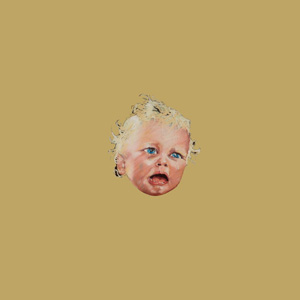 I find it rather odd that Swans have suddenly become digital media darlings at this point in their career. Not that Michael Gira and his exemplary band are undeserving by any means, but their post-reformation output is anything but accessible or commercially friendly. Small clips or snippets might seem to belie the force of their early records, but as full compositions these songs are anything but conventional. As great as The Seer was, To Be Kind is an even more focused distillation of the best moments of that record, while still maintaining that grandiose scale that no other band manages to reach.
I find it rather odd that Swans have suddenly become digital media darlings at this point in their career. Not that Michael Gira and his exemplary band are undeserving by any means, but their post-reformation output is anything but accessible or commercially friendly. Small clips or snippets might seem to belie the force of their early records, but as full compositions these songs are anything but conventional. As great as The Seer was, To Be Kind is an even more focused distillation of the best moments of that record, while still maintaining that grandiose scale that no other band manages to reach.
To Be Kind unsurprisingly fits nicely next to The Seer in overall style, but refines the moments of that record to an even sharper focus and eschewing the stuff from that album that did not sit as well with me.Epic bombast is the name of the game here, with most of these songs fitting in most comfortably aside the aforementioned album's title song and "The Apostate" in their mantra-like repetitions that build to glorious climaxes of noise and chaos.
There is a more significant studio dynamic when compared to The Seer, like due to the recording and engineering work by John Congleton, with Gira at the production helm.The result is a slightly thicker, more treated and effected sound rather than the stripped down, live-in-the-studio feel of the past two albums.This works quite well:no matter how well recorded an album is, it cannot fully capture the intensity of Swans in concert, so the additional production results in a different type of heaviness.
Since the folk trappings of My Father Will Guide Me Up a Rope to the Sky have been effectively excised (largely, I assume, as the last vestiges of the Angels of Light), the album perhaps shows its closest debt to another form of American roots music, namely the blues of the early 20th century.Not this is necessarily a new thing:without the distortion, apocalyptic drums and tortured vocals of the Cop/Young God era, the overall structure of those songs was essentially blues in nature.Here the genre's influence is far more overt, such as the cyclic guitar/bass/drum arrangements of "Screen Shot" and the mid paced, slide-guitar heavy introduction to "Just a Little Boy (for Chester Burnett)," which goes as far to recognize Howlin' Wolf’s legal name in its title.That overall sound might not be as obvious throughout the remainder of the album, but the loping, repetitive approach can be heard clearly throughout.
A good portion of the ten songs that make up To Be Kind have been played on tour for the past couple of years, and even appeared on the limited Not Here/Not Now live set from last year that helped fund this recording.Never a band to fit expectations, Swans are the band that releases a new album, and plays mostly new, unreleased songs when touring to promote it.These songs, in their studio forms, stay rather faithful to their live incarnations, mostly just coming across a bit cleaner in the mix, or a bit more complex due to the tweaking and layering the setting made possible.
One song that did not appear on the live set and made for a controversial teaser for the album is "A Little God in My Hands."On first impression it was so conventional and almost pleasant, shuffling along with more than a hint of New Orleans jazz behind it.The erratic stabs of electronics and distortion kept that sense of pleasantness from settling in, and I doubt many other songs that sound superficially upbeat have "shit and blood" referenced in the lyrics."Some Things We Do" is another that appears here for the first time and is the most radical departure for the album.A melancholy duet between Gira and Little Annie with strings by Julia Kent, the music fits the humanity conveyed within the lyrics, a bit of vulnerability on this colossus of an album.
Gira's insistence that Swans are not trying to capture hatred or violence, but a sense of ecstasy, appears in an appropriately perverse fashion on "She Loves Us."The jerky rhythms and horns, paired with his revivalist, singing-in-tongues vocals on the first half make for an appropriately bizarre take on spiritual music, which is magnified in the second half.The music locks into a more traditional rhythm, as chanted and reverent "Halleluiah"s are tracked with screams of "Fuck fuck fuck/Your name is fuck!"Gira's monastic chanting on the first half of the sprawling, 34 minute "Bring in the Sun/Toussaint L'Ouverture" follows the opening salvo of instrumental pounding, again giving that revivalist vibe before the sound of horses heralds the full on war of the second half.Epic is an adjective that has lost most of its meaning in recent years, but here is a case where it is 100 percent appropriate.
I think we are beyond the point of Swans needing to prove that this is a full on reincarnation and not a nostalgia trip, and the singular force of To Be Kind makes this explicitly clear.Due to the drastically varying phases in their career, there is no way I could truly rank order their discography, but this album sits perfectly with the others, and for me is the most consistently brilliant in this third phase of their career.It may go without saying, but I cannot think of any artist in any genre that can still be at the top of their game over 30 years into their career and after such a long period of inactivity.Swans may have become the darlings of some hipster publications that will remain nameless, but this is a case where the hype is surrounding an album of substance, not just something that is the current flavor of the week.
samples:
Read More
- Administrator
- Albums and Singles
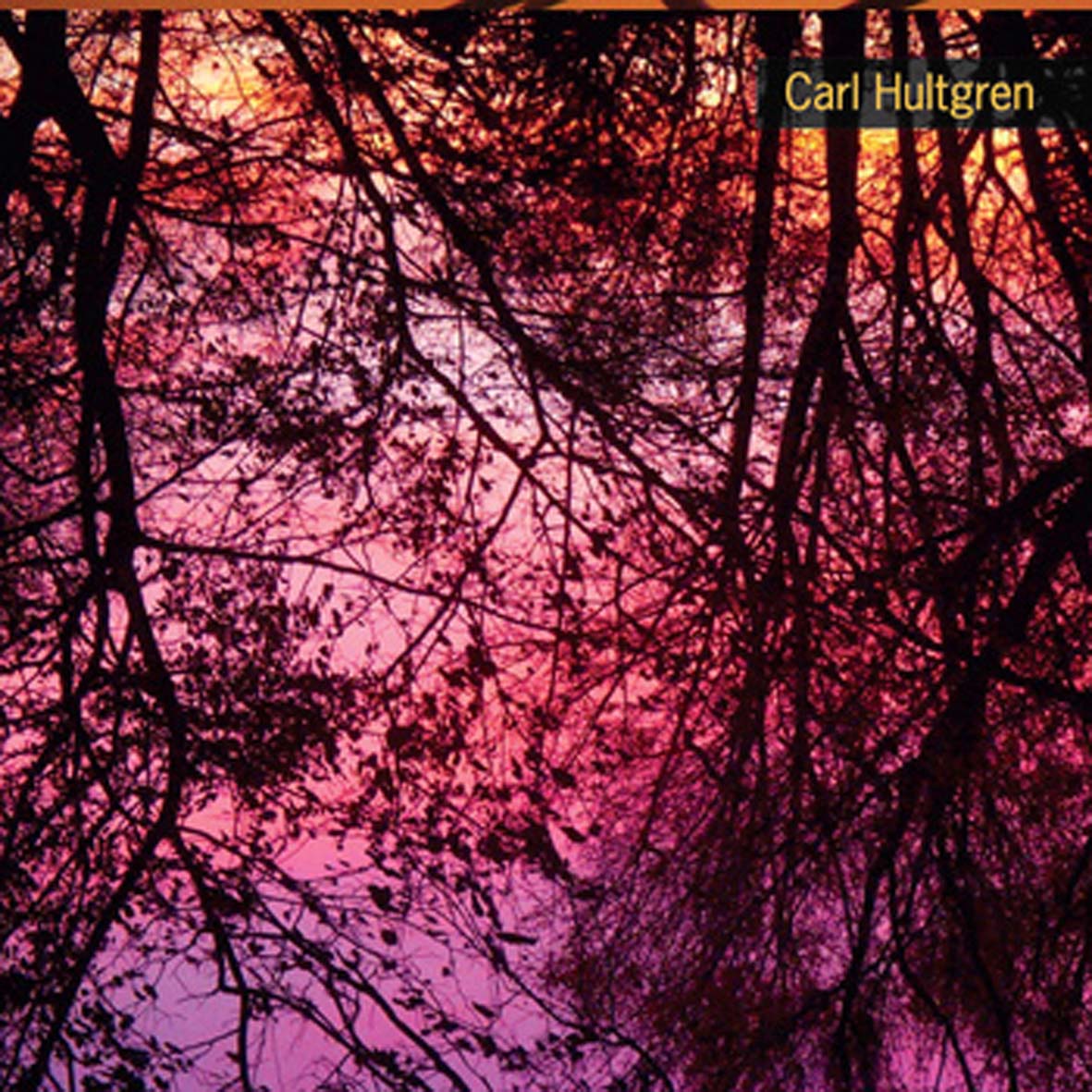 Most of Carl's first solo album perversely sounds almost exactly like what I would expect it to sound like: a Windy & Carl album without Windy.  On one hand, that is a little disappointing, as it would have been interesting to hear a completely different side of Hultgren's artistry and this material probably could have been the start to yet another great collaboration.  On the other hand, Carl's languorous, shimmering guitar passages have always been my favorite part of Windy & Carl's music and now I get an uninterrupted two-hour deluge of them.  Though the presence of a vocalist would have added some nice contrast and variety, Tomorrow is still strewn with more than enough dreamy beauty and understated masterpieces to work quite nicely on its own.
Most of Carl's first solo album perversely sounds almost exactly like what I would expect it to sound like: a Windy & Carl album without Windy.  On one hand, that is a little disappointing, as it would have been interesting to hear a completely different side of Hultgren's artistry and this material probably could have been the start to yet another great collaboration.  On the other hand, Carl's languorous, shimmering guitar passages have always been my favorite part of Windy & Carl's music and now I get an uninterrupted two-hour deluge of them.  Though the presence of a vocalist would have added some nice contrast and variety, Tomorrow is still strewn with more than enough dreamy beauty and understated masterpieces to work quite nicely on its own.
Actually, I suppose it may be a bit of an oversimplification to say that this album sounds almost exactly like an entirely instrumental Windy & Carl album: there are some significant differences, but I think they will only be apparent to the most serious of fans.  The most prominent one is that most of these twelve pieces feel a bit simpler, more fragile, and more understated that most of Windy & Carl's work.It almost seems like some pieces were real-time, "live" recordings of just Carl and his guitar, but they were not: Hultgren is just extremely nuanced in his layering this time around and Tomorrow's unhurried spaciousness is entirely by design, though it sometimes yields mixed results.  The other key differences are a bit more isolated and aberrant.  On "Hidden," for example, Hultgren unexpectedly augments his quavering, oceanic droning with field recordings of hisses, dripping water, and something that sounds like a light rain on a tin roof.  On another piece, "In This Land," Carl approximates a woozy and blurry twist on '70s country rock.
In general, however, Tomorrow’s songs fall into one of two styles: warm, shimmering layers of droning guitars or slow-motion chord progressions of chorused strums or arpeggios.  In both cases, Carl augments those foundations with subtle synth and processed guitar coloration.  To my ears, the dronier pieces feel like the more successful ones, as the more song-like ones often feel a bit too naked without vocals. Tomorrow’s 17-minute centerpiece, "Transparency and Light," does not quite fall into either category, however, as it sometimes eschews any kind of foundation at all.  Instead, Carl unspools a slow-motion almost-melody of melancholy synth or EBow swells that is organically embellished with subtle washes of guitar.  It is an absolutely beautiful and unique piece and goes a long way towards explaining why Carl wanted to release a solo album in the first place: the magic of "Transparency" lies entirely in its nakedness and fragility and any addition at all would have broken the slow-motion, hypnotic reverie.  Also, more than any other piece, "Transparency" evokes the album's stated inspiration: Carl's change in mindset after moving into a lovely old house surrounded by old trees.  If there can be an audio equivalent to sunlight flickering through gently swaying branches, this is probably it.
Notably, the CD and vinyl versions of Tomorrow are augmented with an additional six songs.  One is an instrumental version of Windy & Carl's recent "I Walked Alone" single that I probably could do without (the original is better).  The other five pieces are all surprisingly good for bonus tracks though.  A few are alternate versions of songs that made the album and a few are just untitled outtakes, but all could have probably been seamlessly inserted into the proper album.  In fact, a couple of them (the tambourine version of "Ledge" and the ambitiously expanded version of "Found My Home") might even be better than the versions that made the album (particularly the latter).
As alluded to earlier, all of that adds up to a veritable avalanche of twinkling, quasi-shoegaze bliss.  Most of it is good, some of it is great, and cumulatively it is a bit overwhelming (albeit in a good way).  As far as complete albums/artistic statements go, Tomorrow feels much more like an enjoyable and occasionally sketch-like side project than a true highlight in Hultgren's discography, but the epic "Transparency" is as essential as anything Carl has recorded to date and the extended version of "Found My Home" is not far behind.
 
Read More
- Administrator
- Albums and Singles

Sublime Frequencies is thrilled to present a second volume of classic tracks from Algeria's popular music history. Where volume 1 focused on the early to mid-1970s Rai scene in western Algeria, this album features a variety of pop and folk styles from that same period. From the heavier rock and psychedelic sounds of Rachid & Fethi, Les Djinns and Les Abranis, to the haunting folk music of Kri Kri and Djamel Allem and the film soundtrack moods of Ahmed Malek, 1970s Algerian Folk & Pop documents a key period in the modern musical renaissance of a nation in transition.
Most of these tracks are from 45 rpm singles, the key format during the early 1970s before the cassette took over as the medium of choice. Western musical influences can be heard throughout this extremely diverse record, yet there is an undeniable Algerian sense of sadness contained here within a more tolerant space in time between two of the country's most significant historical periods; National Independence from France and the darker times of a brutal civil war yet to come. Compiled by Hicham Chadly, this limited edition LP comes in a full-color gatefold jacket with lovely images from the period and extensive liner-notes by Omar Zelig, Algeria's most legendary radio DJ.
More information will soon be found here.
Read More